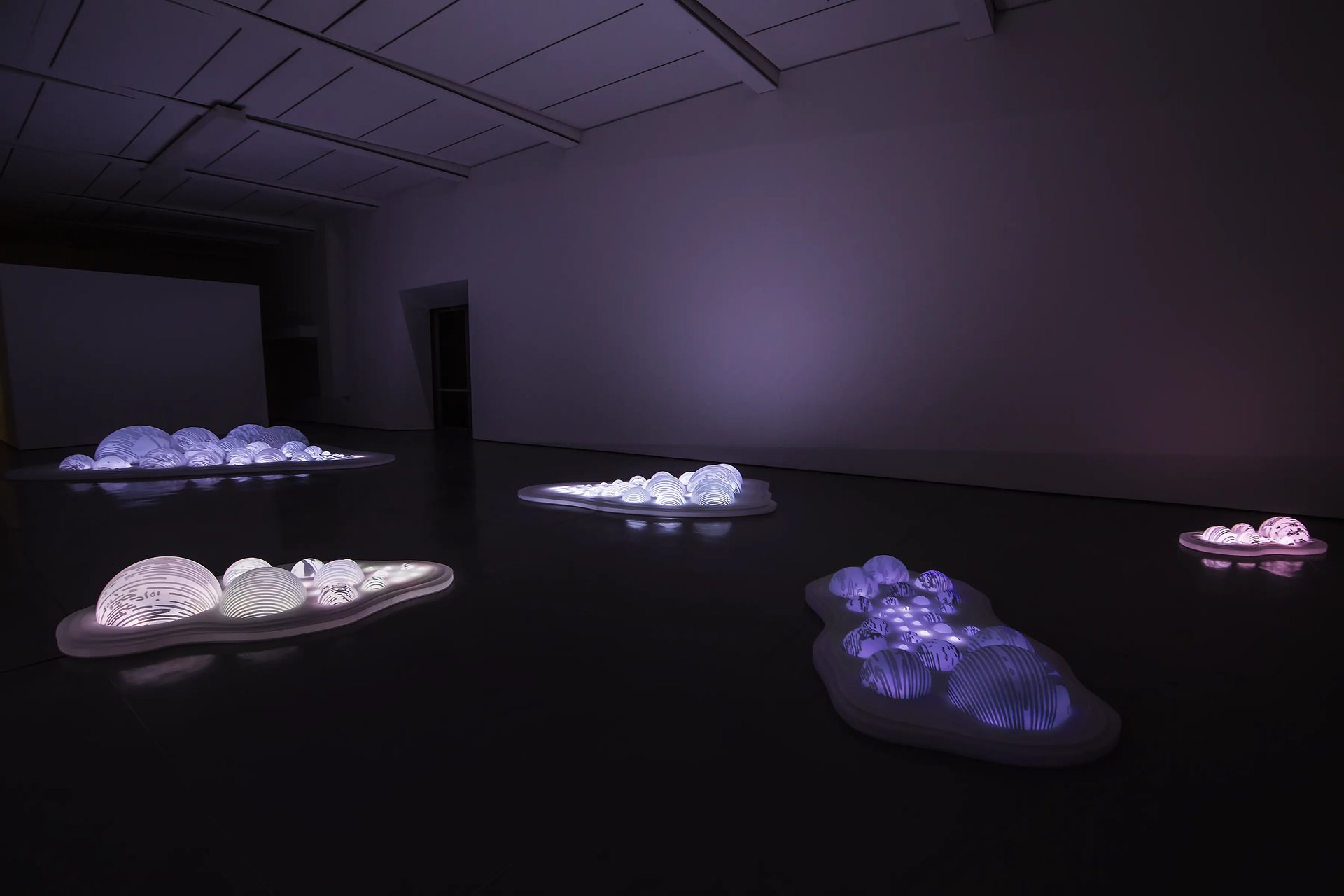PublicMag Fall/Winter Issue
TERRAFORMS
TEXTGRIMANESA AMOROS
For its premier exhibition this December, The Lab Projects in conjunction with lemon+sky projects presents the work of Grimanesa Amorós, an interdisciplinary artist with diverse interests in the fields of social history, scientific research and critical theory. Amorós utilizes her art as an agent for empowerment to involve viewers from all different backgrounds and communities. She is an American, born in Lima, Peru and currently living and working in New York City.
In the midst of an industrial loft in Wynwood, Terraforms, emerages as a lighting sculpture that makes the viewers pause to catapult them to a new dimension. The title is inspired by the scientific theory and practice of terraforming, a process that reshapes a natural environment in order to better support life. Through the use of technology such as irrigation, verdant farms are created in the middle of deserts, and land previously uninhabitable becomes not only fit for settlement, but also fertile for cultivation. “Since my childhood I’ve been attracted by the abstract visual quality of such landscapes. When traveling by plane, I could always be found glued to a window, astonished by the preciseness of the terraced steps of places such as Machu Picchu or by the patchwork pattern of the farmland below,” reminisces the artist. The esthetic purity of these manmade vistas stands out in stark contrast to the untouched quality of their environs. They are basic in form—often inspired by geometric figures. As seen from above, the individual circular fields that inspired this project appear incredibly simple, yet they combine to reveal intricate, unique designs. Technology, social and political forces collide when natural resources are stretched to their absolute limits.
These shapes become emblematic of humanity’s struggle for survival. Terraforms encourages viewers to reflect on the inestimable impact natural environments have on human history, underlining fundamental sources of conflict in many sparse outposts of civilization. It impels us to question what is “natural”—in allowing a glimpse of the cryptic but conspicuous signature we leave on the landscape of our planet.




